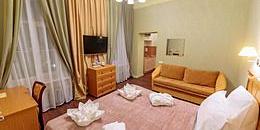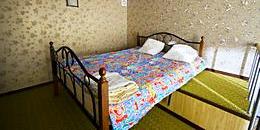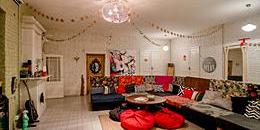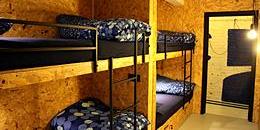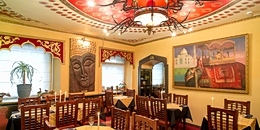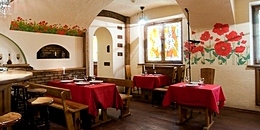Admiralteiskaya Naberezhnaya (Admiralty Embankment)
This short embankment (only 630 meters long) runs along one of the most historic areas of St. Petersburg. In 1704, Peter the Great founded the Admiralty shipyard at this site, where warships were built for the Baltic Navy. Today everything here is reminiscent of the founder of the city including the majestic Admiralty itself, the world famous Bronze Horseman, and the Tsar Carpenter monument. Here at the Palace Pier very famous lion sculptures were installed.
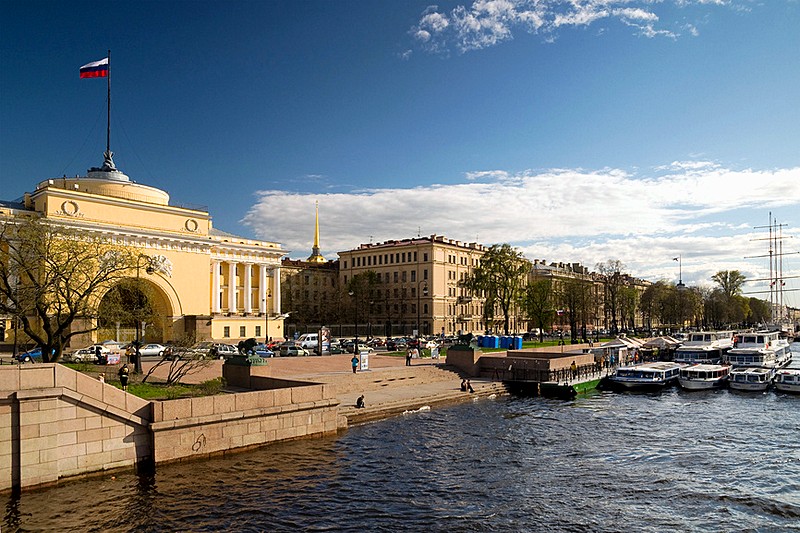
Since the Admiralty building was constructed, shipyards have occupied the entire area - a pet project of Peter I. In the 1820s, the Palace and Petrovskaya Piers were built on either side of the Admiralty, and in 1832, the Palace Pier was adorned with decorative vases and sculptural figures of lions making it, according to many, the most beautiful in St. Petersburg. After Palace Bridge was constructed 1912-1916, the pier was dismantled and a new pier was built a little downstream. Vases were also transferred to the adjacent Petrovskaya Pier.
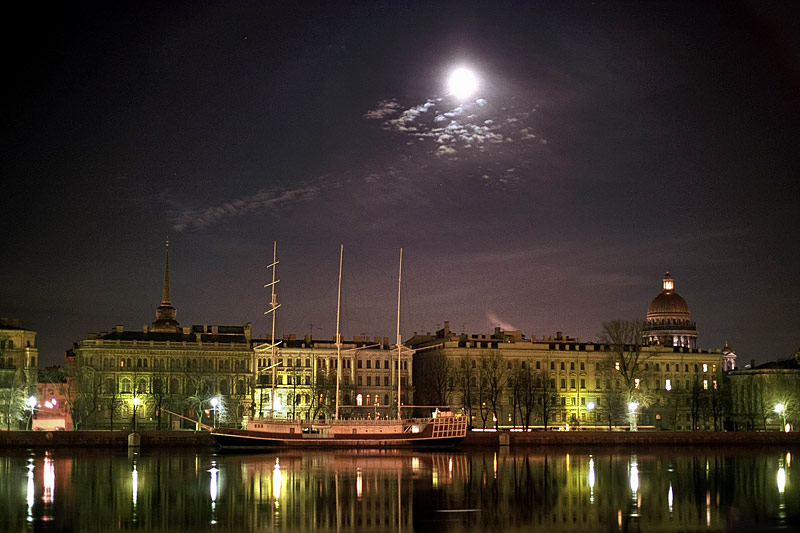
The modern embankment appeared in 1873-74. In 1875, a boulevard was laid on the embankment, and in 1909 and 1910, two small monuments to Peter I were installed there - the Tsar Carpeneter and "Peter I rescues a drowning victim in Lakhta in 1724." Both were demolished in 1918, deemed evil propaganda of the Tsarist monarchy. However, a copy of the Tsar Carpenter was donated to the city of Zaandam, Netherlands in memory of the time Peter I spent in the city. In 1996, the Government of the Netherlands gave the Zaandam copy back to the residents of St. Petersburg and the Tsar-Carpenter was returned to its original place.

The construction of the embankment was of no less interest. The main thing here is the Admiralty building in the shape of the letter U. Its two end wings face the Neva with squat porticos, between which there is a large amount of space. After the closure of the shipyards, plans were made to build a magnificent architectural ensemble worthy of the capital city of a great European empire. However, in the 1880s the area was cut into sections that were sold to private individuals. The most attractive of these for visitors are the Palace of Grand Duke Mikhail Mikhailovich (the Small Michael Palace), built in the years 1885-1891 by the architect Maximilian Mesmakher; the building of the Noble Bank and Peasants Bank; and the Rukavishnikov Apartment House, where composer Pyotr Tchaikovsky stayed.
One time at No. 4 the popular Panayev Theater stood. This is where the debut of the great Russian opera singer Fyodor Chaliapin took place. Alas, the theater burned down in 1917, and in its place in 1958, a Stalinist neoclassical school building was erected.
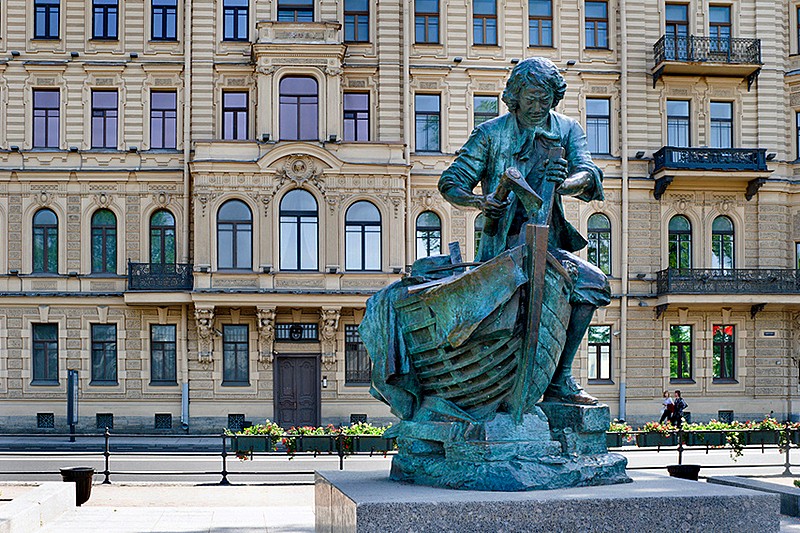
Today, Admiralteiskaya Embankment is a favorite place for visitors and residents of St. Petersburg alike. Under the canopy of trees the boulevard is good for hiding from the summer heat. Here there are street musicians and open-air cafes, and you can catch excursions along the Neva River and Meteor hydrofoils for Peterhof.
| Metro stations: | Admiralteyskaya |
|---|---|
| Directions: | Exit Admiralteyskaya Metro Station, turn left along Nevsky Prospekt to Palace Square and turn left again when you reach the Bolshaya Neva River |
| Best walking route: | All the embankment (approximately 20 minutes) |
| What's here? | Admiralty, The Bronze Horseman, Palace of Grand Duke Mikhail Mikhailovich (Small Michael Palace), Noble Bank and Peasants' Bank, Rukavishnikov Apartment House, Tsar-Carpenter, Palace Pier, Peter's Wharf |
| What's nearby? | Senatskaya Ploshchad, Angliskaya (English) Embankment, Palace Embankment, Palace Bridge, Bolshaya Neva, The Winter Palace / Hermitage |


